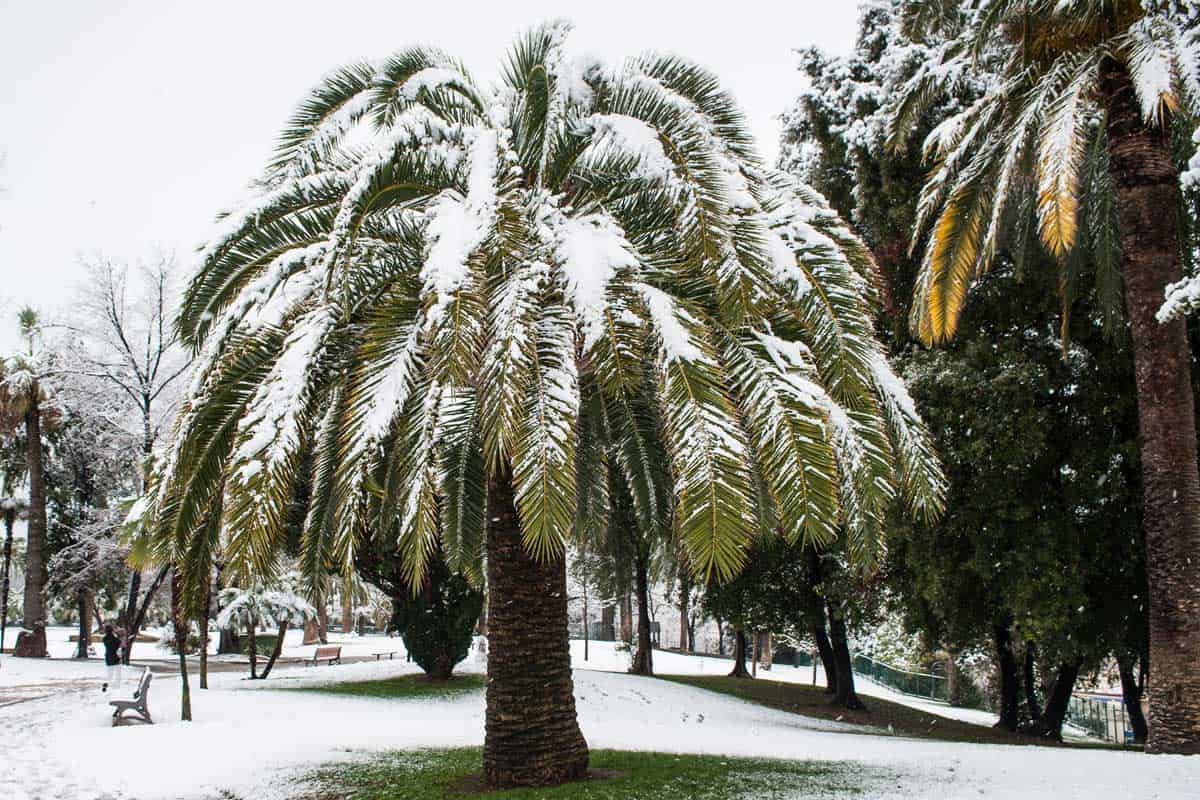Spoiler alert, palm trees cannot grow unprotected outdoors in Canada except for a couple notable exceptions. These exceptions include zone 8 areas around Vancouver and Vancouver island or if you have a "micro-climate" in your zone 6/7 yard.
What about the rest of Canada? For 99% of the people reading this article, you are located in zone 5, 6, or 7 and you CAN grow palm trees outdoors using special protection techniques known as "zone-pushing". You can learn more about zone-pushing in our tutorial here: How to winterize cold hardy palm trees outdoors anywhere in Canada.
What kind of palm trees are suitable for zone-pushing? Truly tropical palms like a coconut palm will languish and almost certainly die during our harsh winters even when protected. To be successful, you'll need to select a cold-hardy palm which is rated for zone 7, 8, or even 9. Here are some of the best options broken down by difficulty:
ZONE 7 PALMS (BEGINNER)
Choose an appropriate well-draining planting site and protect for winter properly, and these palms have a very high chance of success. Zone 7 palms can be left unprotected late into the fall until double-digit negative temperatures approach. No need to plug in supplemental heating on a thermocube once protected unless temperature dip below -10C. (Save power!)
Needle Palm (Rhapidophyllum Hystrix)
Windmill Palm (Tracycarpus Fortunei)
Waggie Palm (Tracycarpus Wagnerianus)
Dwarf Palmetto (Sabal Minor)
ZONE 8 PALMS (INTERMEDIATE)
Zone 8 palms also have fairly high success rates, but are less forgiving to poor planting sites, improper and late protection. These palms cam handle a light frost, but be diligent to get them protected before even colder temperature approach. Keep these plugged into supplemental heating on a thermocube for the entire winter to ensure they are protected.
European Fan Palm (Chamaerops Humilis)
Pindo Palm (Butia Capitata)
Mexican Fan Palm (Washingtonia Robusta)
Saw Palmetto (Serenoa Repens)
Canary Island Date Palm (Phoenix Canariensis)
Sylvester Date Palm (Phoenix Sylvestris)
Mule Palm (Butiagrus Nabonnandii)
Cabbage Palm (Sabal Palmetto)
ZONE 9 PALMS (ADVANCED)
There are plenty of success stories of zone-pushing zone 9 palms. However, there are also countless failures as well. Chances of success are not nearly as high as zone 7 and 8 palms. More advanced techniques may be required ranging from using twin-wall polycarbonate to allow light in, to building moisture barriers and heating in the ground surrounding the roots.
Chinese Fan Palm (Livistona Chinensis)
Lady Palm (Rhapis Excelsa)
Pygmy Date Palm (Phoenix Roebelenii)
Bismarck Palm (Bismarckia Nobilis)

